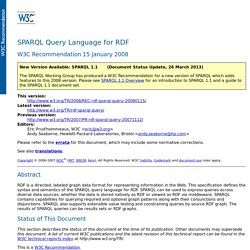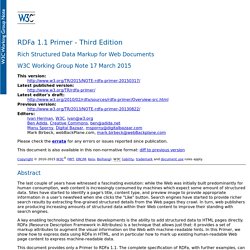

Ontologies. SEALINCMedia: Socially-enriched access to linked cultural media. ICT-Challenge Although computers are far better at for instance computational tasks than humans, in other areas like object recognition we still have an advantage.

When we combine human and computer capacities we can benefits from the best of both worlds. The ICT-science challenge of SEALINCMedia is exactly this: modeling and evaluating human input for multimedia content access for the purpose of integrating this input with automatic data analysis. The project emphasizes the integration of large crowds, high quality of human input and appropriate use of CPU-power. This leads to the notion of human computation power, defined as crowd size * quality of input * CPU power, optimized in the project for creating large-scale multimedia content access. The inspiration for SEALINCMedia comes from the emerging trend of digital heritage going social. Significant results have been reached in 2012 along all five COMMIT/dimensions. Search. Welkom to OpenSKOS. SPARQL Query Language for RDF.
W3C Recommendation 15 January 2008 New Version Available: SPARQL 1.1 (Document Status Update, 26 March 2013) The SPARQL Working Group has produced a W3C Recommendation for a new version of SPARQL which adds features to this 2008 version.

Please see SPARQL 1.1 Overview for an introduction to SPARQL 1.1 and a guide to the SPARQL 1.1 document set. This version: Latest version: Previous version: Editors: Eric Prud'hommeaux, W3C <eric@w3.org> Andy Seaborne, Hewlett-Packard Laboratories, Bristol <andy.seaborne@hp.com> Please refer to the errata for this document, which may include some normative corrections. See also translations. Copyright © 2006-2007 W3C® (MIT, ERCIM, Keio), All Rights Reserved. Abstract RDF is a directed, labeled graph data format for representing information in the Web.
SKOS Simple Knowledge Organization System Primer. Abstract SKOS—Simple Knowledge Organization System—provides a model for expressing the basic structure and content of concept schemes such as thesauri, classification schemes, subject heading lists, taxonomies, folksonomies, and other similar types of controlled vocabulary.

As an application of the Resource Description Framework (RDF), SKOS allows concepts to be composed and published on the World Wide Web, linked with data on the Web and integrated into other concept schemes. This document is a user guide for those who would like to represent their concept scheme using SKOS. In basic SKOS, conceptual resources (concepts) are identified with URIs, labeled with strings in one or more natural languages, documented with various types of note, semantically related to each other in informal hierarchies and association networks, and aggregated into concept schemes. In advanced SKOS, conceptual resources can be mapped across concept schemes and grouped into labeled or ordered collections. RDF Primer. RDF - Semantic Web Standards. Overview RDF is a standard model for data interchange on the Web.

RDF has features that facilitate data merging even if the underlying schemas differ, and it specifically supports the evolution of schemas over time without requiring all the data consumers to be changed. RDF extends the linking structure of the Web to use URIs to name the relationship between things as well as the two ends of the link (this is usually referred to as a “triple”). Using this simple model, it allows structured and semi-structured data to be mixed, exposed, and shared across different applications. This linking structure forms a directed, labeled graph, where the edges represent the named link between two resources, represented by the graph nodes. Recommended Reading. RDFa 1.1 Primer. We begin the introduction to RDFa by using a subset of all the possibilities called RDFa Lite 1.1 [rdfa-lite].

The goal, when defining that subset, was to define a set of possibilities that can be applied to most simple to moderate structured data markup tasks, without burdening the authors with additional complexities. Many Web authors will not need to use more than this minimal subset. 2.1.1 The First Steps: Adding Machine-Readable Hints to Web Pages Consider Alice, a blogger who publishes a mix of professional and personal articles at We will construct markup examples to illustrate how Alice can use RDFa.
RDFa. RDFa (or Resource Description Framework in Attributes[1]) is a W3C Recommendation that adds a set of attribute-level extensions to HTML, XHTML and various XML-based document types for embedding rich metadata within Web documents. The RDF data-model mapping enables its use for embedding RDF subject-predicate-object expressions within XHTML documents. It also enables the extraction of RDF model triples by compliant user agents. The RDFa community runs a wiki website to host tools, examples, and tutorials.[2] History[edit] RDFa was first proposed by Mark Birbeck in the form of a W3C note entitled XHTML and RDF,[3] which was then presented to the Semantic Web Interest Group at the W3C's 2004 Technical Plenary.[3] Later that year the work became part of the sixth public Working Draft of XHTML 2.0.[4][5] Although it is generally assumed that RDFa was originally intended only for XHTML 2, in fact the purpose of RDFa was always to provide a way to add a metadata to any XML-based language.